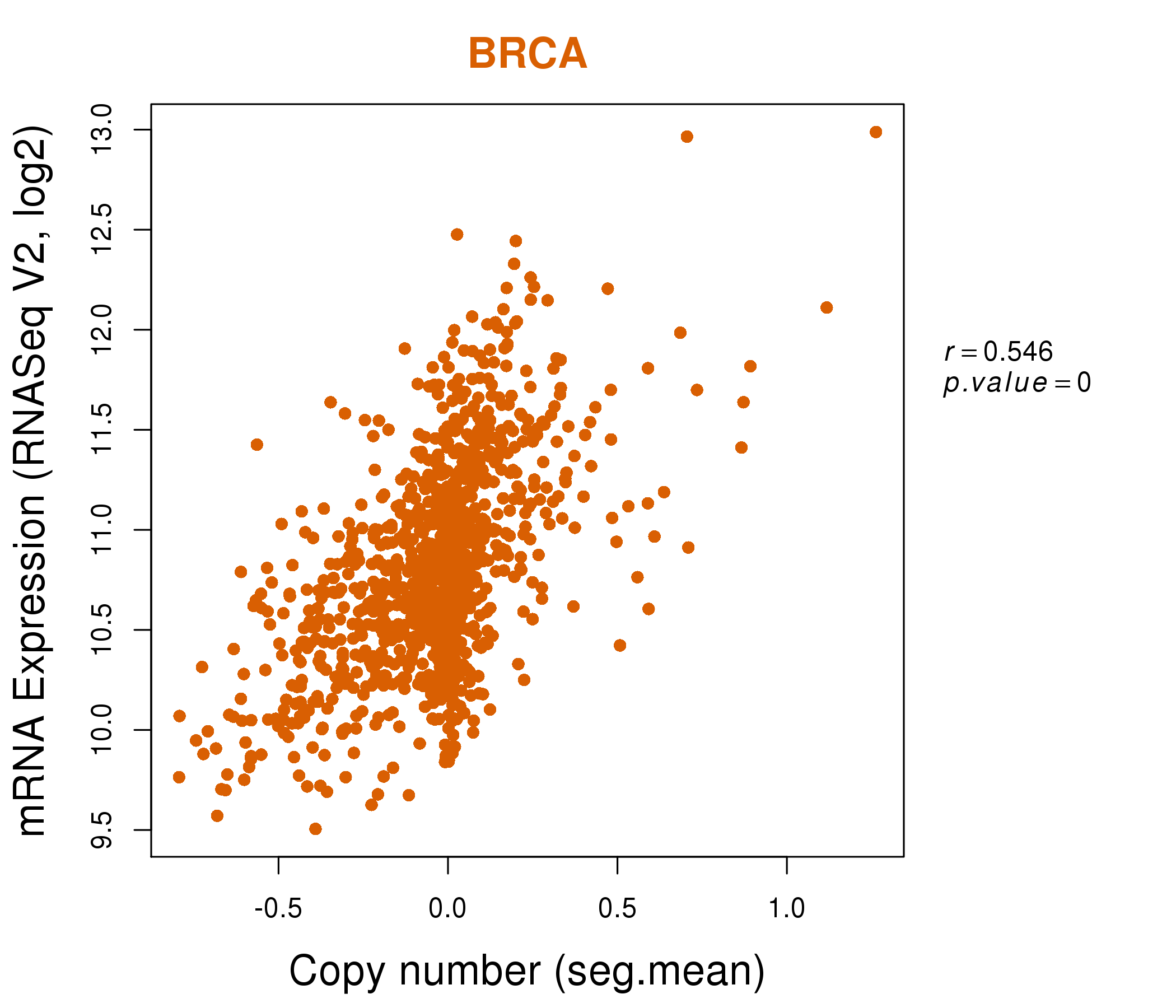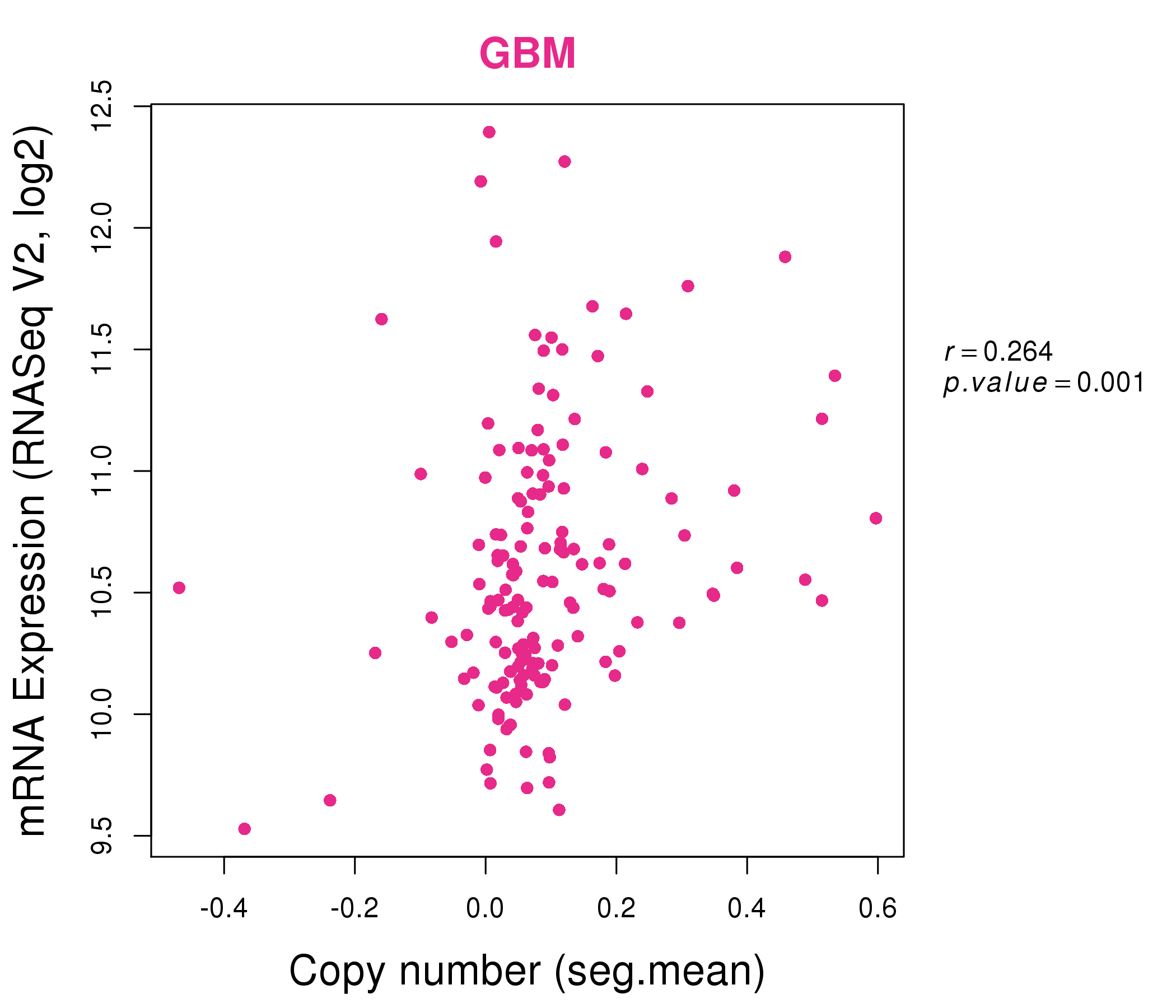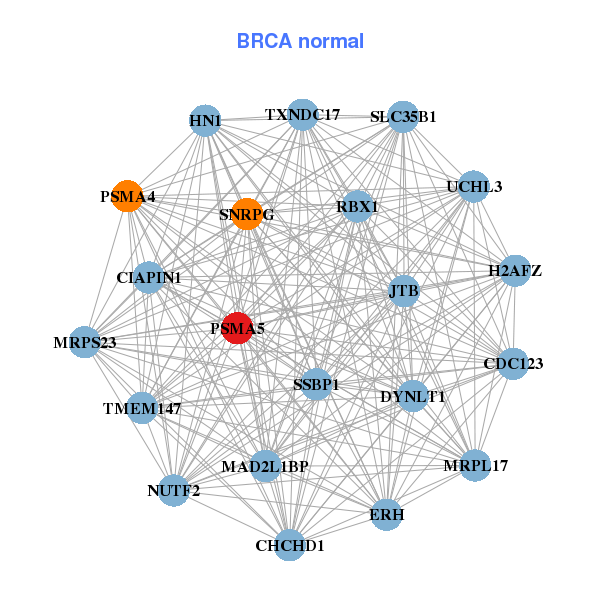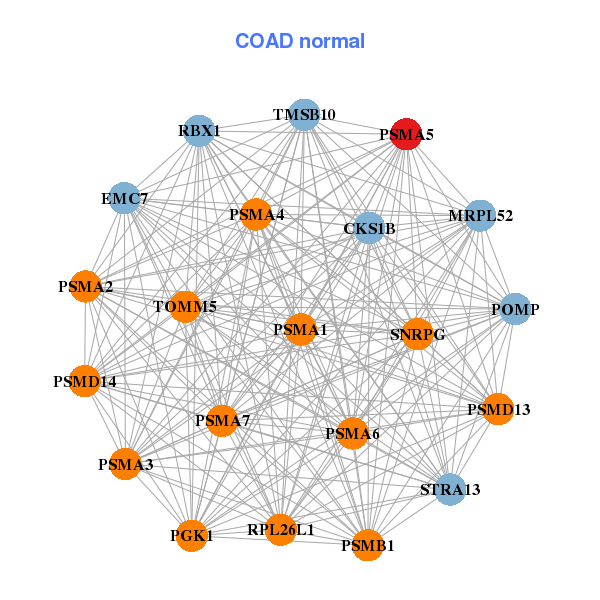|
||||||||||||||||||||
| |
| Phenotypic Information (metabolism pathway, cancer, disease, phenome) |
| |
| |
| Gene-Gene Network Information: Co-Expression Network, Interacting Genes & KEGG |
| |
|
| Gene Summary for PSMA5 |
| Basic gene info. | Gene symbol | PSMA5 |
| Gene name | proteasome (prosome, macropain) subunit, alpha type, 5 | |
| Synonyms | PSC5|ZETA | |
| Cytomap | UCSC genome browser: 1p13 | |
| Genomic location | chr1 :109941652-109969108 | |
| Type of gene | protein-coding | |
| RefGenes | NM_001199772.1, NM_001199773.1,NM_001199774.1,NM_002790.3, | |
| Ensembl id | ENSG00000143106 | |
| Description | macropain subunit zetamacropain zeta chainmulticatalytic endopeptidase complex zeta chainproteasome alpha 5 subunitproteasome component 5proteasome subunit alpha type-5proteasome subunit zetaproteasome zeta chain | |
| Modification date | 20141207 | |
| dbXrefs | MIM : 176844 | |
| HGNC : HGNC | ||
| Ensembl : ENSG00000143106 | ||
| HPRD : 01464 | ||
| Vega : OTTHUMG00000012001 | ||
| Protein | UniProt: go to UniProt's Cross Reference DB Table | |
| Expression | CleanEX: HS_PSMA5 | |
| BioGPS: 5686 | ||
| Gene Expression Atlas: ENSG00000143106 | ||
| The Human Protein Atlas: ENSG00000143106 | ||
| Pathway | NCI Pathway Interaction Database: PSMA5 | |
| KEGG: PSMA5 | ||
| REACTOME: PSMA5 | ||
| ConsensusPathDB | ||
| Pathway Commons: PSMA5 | ||
| Metabolism | MetaCyc: PSMA5 | |
| HUMANCyc: PSMA5 | ||
| Regulation | Ensembl's Regulation: ENSG00000143106 | |
| miRBase: chr1 :109,941,652-109,969,108 | ||
| TargetScan: NM_001199772 | ||
| cisRED: ENSG00000143106 | ||
| Context | iHOP: PSMA5 | |
| cancer metabolism search in PubMed: PSMA5 | ||
| UCL Cancer Institute: PSMA5 | ||
| Assigned class in ccmGDB | C | |
| Top |
| Phenotypic Information for PSMA5(metabolism pathway, cancer, disease, phenome) |
| Cancer | CGAP: PSMA5 |
| Familial Cancer Database: PSMA5 | |
| * This gene is included in those cancer gene databases. |
|
|
|
|
|
| . | ||||||||||||||
Oncogene 1 | Significant driver gene in | |||||||||||||||||||
| cf) number; DB name 1 Oncogene; http://nar.oxfordjournals.org/content/35/suppl_1/D721.long, 2 Tumor Suppressor gene; https://bioinfo.uth.edu/TSGene/, 3 Cancer Gene Census; http://www.nature.com/nrc/journal/v4/n3/abs/nrc1299.html, 4 CancerGenes; http://nar.oxfordjournals.org/content/35/suppl_1/D721.long, 5 Network of Cancer Gene; http://ncg.kcl.ac.uk/index.php, 1Therapeutic Vulnerabilities in Cancer; http://cbio.mskcc.org/cancergenomics/statius/ |
| REACTOME_METABOLISM_OF_AMINO_ACIDS_AND_DERIVATIVES REACTOME_METABOLISM_OF_MRNA REACTOME_METABOLISM_OF_RNA | |
| OMIM | |
| Orphanet | |
| Disease | KEGG Disease: PSMA5 |
| MedGen: PSMA5 (Human Medical Genetics with Condition) | |
| ClinVar: PSMA5 | |
| Phenotype | MGI: PSMA5 (International Mouse Phenotyping Consortium) |
| PhenomicDB: PSMA5 | |
| Mutations for PSMA5 |
| * Under tables are showing count per each tissue to give us broad intuition about tissue specific mutation patterns.You can go to the detailed page for each mutation database's web site. |
| - Statistics for Tissue and Mutation type | Top |
 |
| - For Inter-chromosomal Variations |
| * Inter-chromosomal variantions includes 'interchromosomal amplicon to amplicon', 'interchromosomal amplicon to non-amplified dna', 'interchromosomal insertion', 'Interchromosomal unknown type'. |
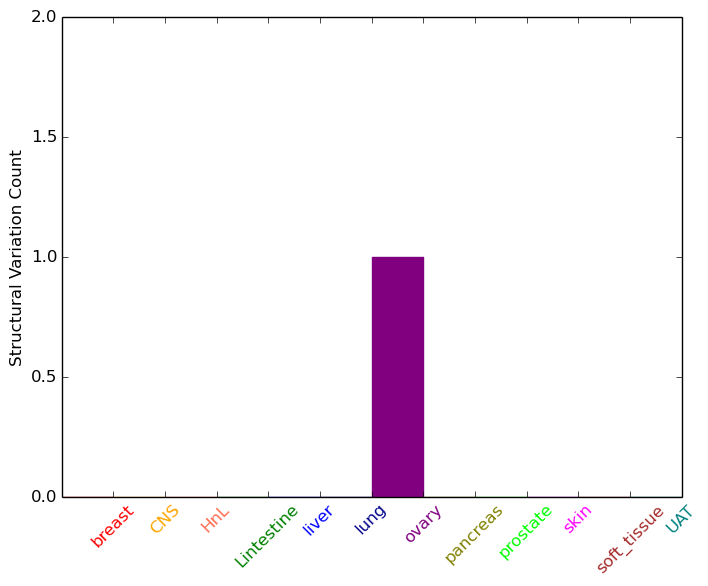 |
| - For Intra-chromosomal Variations |
| * Intra-chromosomal variantions includes 'intrachromosomal amplicon to amplicon', 'intrachromosomal amplicon to non-amplified dna', 'intrachromosomal deletion', 'intrachromosomal fold-back inversion', 'intrachromosomal inversion', 'intrachromosomal tandem duplication', 'Intrachromosomal unknown type', 'intrachromosomal with inverted orientation', 'intrachromosomal with non-inverted orientation'. |
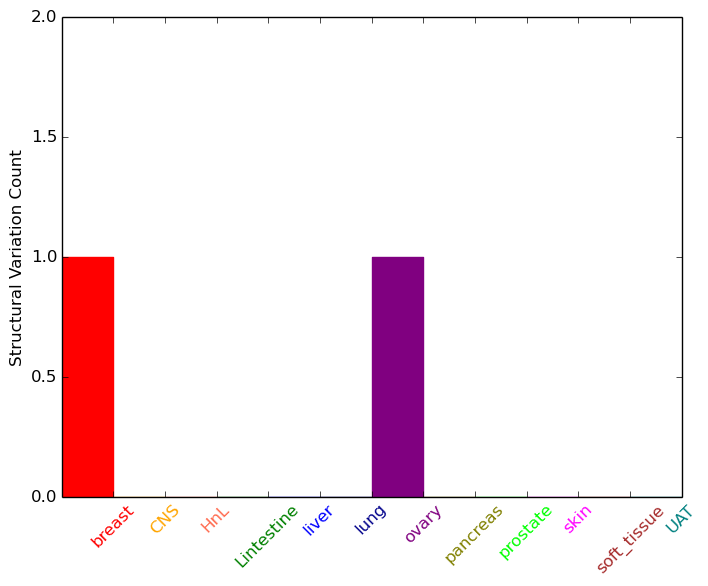 |
| Sample | Symbol_a | Chr_a | Start_a | End_a | Symbol_b | Chr_b | Start_b | End_b |
| breast | PSMA5 | chr1 | 109961538 | 109961538 | PSMA5 | chr1 | 109964437 | 109964437 |
| ovary | PSMA5 | chr1 | 109944206 | 109944226 | ZC3H18 | chr16 | 88683329 | 88683349 |
| ovary | PSMA5 | chr1 | 109946699 | 109946719 | SORT1 | chr1 | 109925311 | 109925331 |
| cf) Tissue number; Tissue name (1;Breast, 2;Central_nervous_system, 3;Haematopoietic_and_lymphoid_tissue, 4;Large_intestine, 5;Liver, 6;Lung, 7;Ovary, 8;Pancreas, 9;Prostate, 10;Skin, 11;Soft_tissue, 12;Upper_aerodigestive_tract) |
| * From mRNA Sanger sequences, Chitars2.0 arranged chimeric transcripts. This table shows PSMA5 related fusion information. |
| ID | Head Gene | Tail Gene | Accession | Gene_a | qStart_a | qEnd_a | Chromosome_a | tStart_a | tEnd_a | Gene_a | qStart_a | qEnd_a | Chromosome_a | tStart_a | tEnd_a |
| BP284679 | PSMA5 | 1 | 442 | 1 | 109954767 | 109969062 | USF1 | 432 | 588 | 1 | 161012649 | 161015686 | |
| Top |
| There's no copy number variation information in COSMIC data for this gene. |
| Top |
|
 |
| Top |
| Stat. for Non-Synonymous SNVs (# total SNVs=11) | (# total SNVs=5) |
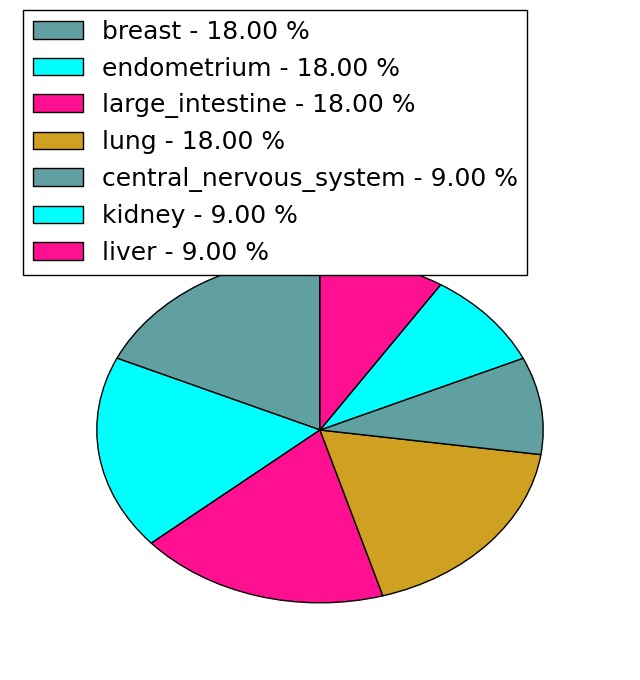 | 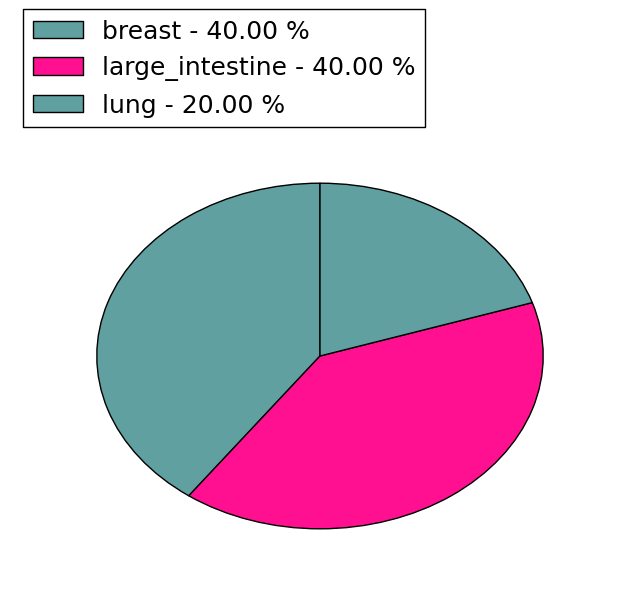 |
(# total SNVs=1) | (# total SNVs=1) |
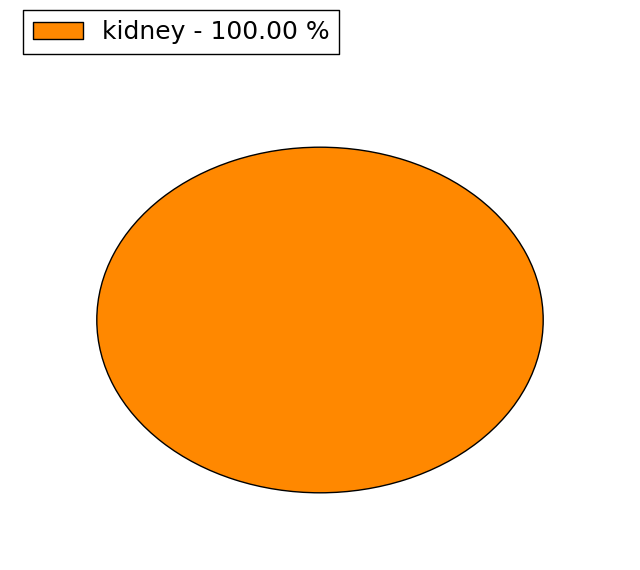 | 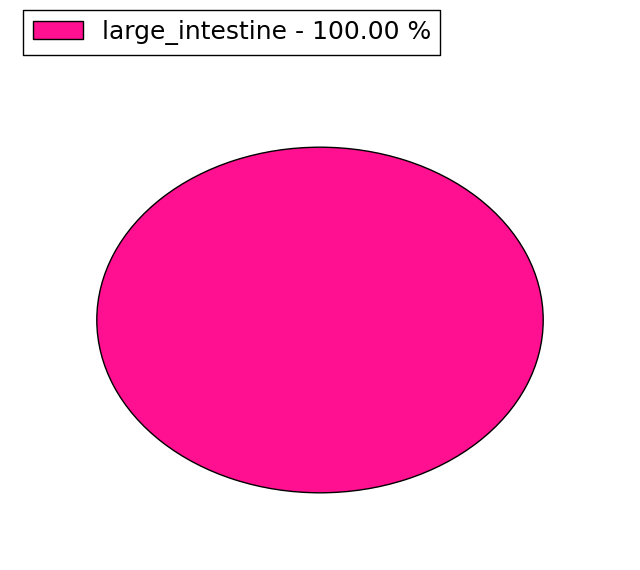 |
| Top |
| * When you move the cursor on each content, you can see more deailed mutation information on the Tooltip. Those are primary_site,primary_histology,mutation(aa),pubmedID. |
| GRCh37 position | Mutation(aa) | Unique sampleID count |
| chr1:109957929-109957929 | p.E51E | 2 |
| chr1:109957934-109957934 | p.V50L | 1 |
| chr1:109953692-109953692 | p.R168* | 1 |
| chr1:109957948-109957948 | p.G45D | 1 |
| chr1:109954503-109954503 | p.Q152* | 1 |
| chr1:109957979-109957979 | p.S35T | 1 |
| chr1:109954510-109954510 | p.K149K | 1 |
| chr1:109964523-109964523 | p.G19R | 1 |
| chr1:109944642-109944642 | p.D240A | 1 |
| chr1:109954749-109954750 | p.S117fs*30 | 1 |
| Top |
|
 |
| Point Mutation/ Tissue ID | 1 | 2 | 3 | 4 | 5 | 6 | 7 | 8 | 9 | 10 | 11 | 12 | 13 | 14 | 15 | 16 | 17 | 18 | 19 | 20 |
| # sample | 1 | 2 | 5 | 1 | 1 | 3 | 1 | 1 | ||||||||||||
| # mutation | 1 | 2 | 4 | 1 | 1 | 3 | 1 | 1 | ||||||||||||
| nonsynonymous SNV | 1 | 1 | 3 | 1 | 1 | 2 | 1 | 1 | ||||||||||||
| synonymous SNV | 1 | 2 | 1 |
| cf) Tissue ID; Tissue type (1; BLCA[Bladder Urothelial Carcinoma], 2; BRCA[Breast invasive carcinoma], 3; CESC[Cervical squamous cell carcinoma and endocervical adenocarcinoma], 4; COAD[Colon adenocarcinoma], 5; GBM[Glioblastoma multiforme], 6; Glioma Low Grade, 7; HNSC[Head and Neck squamous cell carcinoma], 8; KICH[Kidney Chromophobe], 9; KIRC[Kidney renal clear cell carcinoma], 10; KIRP[Kidney renal papillary cell carcinoma], 11; LAML[Acute Myeloid Leukemia], 12; LUAD[Lung adenocarcinoma], 13; LUSC[Lung squamous cell carcinoma], 14; OV[Ovarian serous cystadenocarcinoma ], 15; PAAD[Pancreatic adenocarcinoma], 16; PRAD[Prostate adenocarcinoma], 17; SKCM[Skin Cutaneous Melanoma], 18:STAD[Stomach adenocarcinoma], 19:THCA[Thyroid carcinoma], 20:UCEC[Uterine Corpus Endometrial Carcinoma]) |
| Top |
| * We represented just top 10 SNVs. When you move the cursor on each content, you can see more deailed mutation information on the Tooltip. Those are primary_site, primary_histology, mutation(aa), pubmedID. |
| Genomic Position | Mutation(aa) | Unique sampleID count |
| chr1:109955744 | p.S21S,PSMA5 | 2 |
| chr1:109957929 | p.E7D,PSMA5 | 1 |
| chr1:109957934 | p.E51E | 1 |
| chr1:109957948 | p.V50L | 1 |
| chr1:109944647 | p.G45D | 1 |
| chr1:109964523 | p.G19R | 1 |
| chr1:109952611 | p.P17S | 1 |
| chr1:109964529 | p.S6F | 1 |
| chr1:109952632 | p.I180M,PSMA5 | 1 |
| chr1:109968936 | p.K138T,PSMA5 | 1 |
| * Copy number data were extracted from TCGA using R package TCGA-Assembler. The URLs of all public data files on TCGA DCC data server were gathered on Jan-05-2015. Function ProcessCNAData in TCGA-Assembler package was used to obtain gene-level copy number value which is calculated as the average copy number of the genomic region of a gene. |
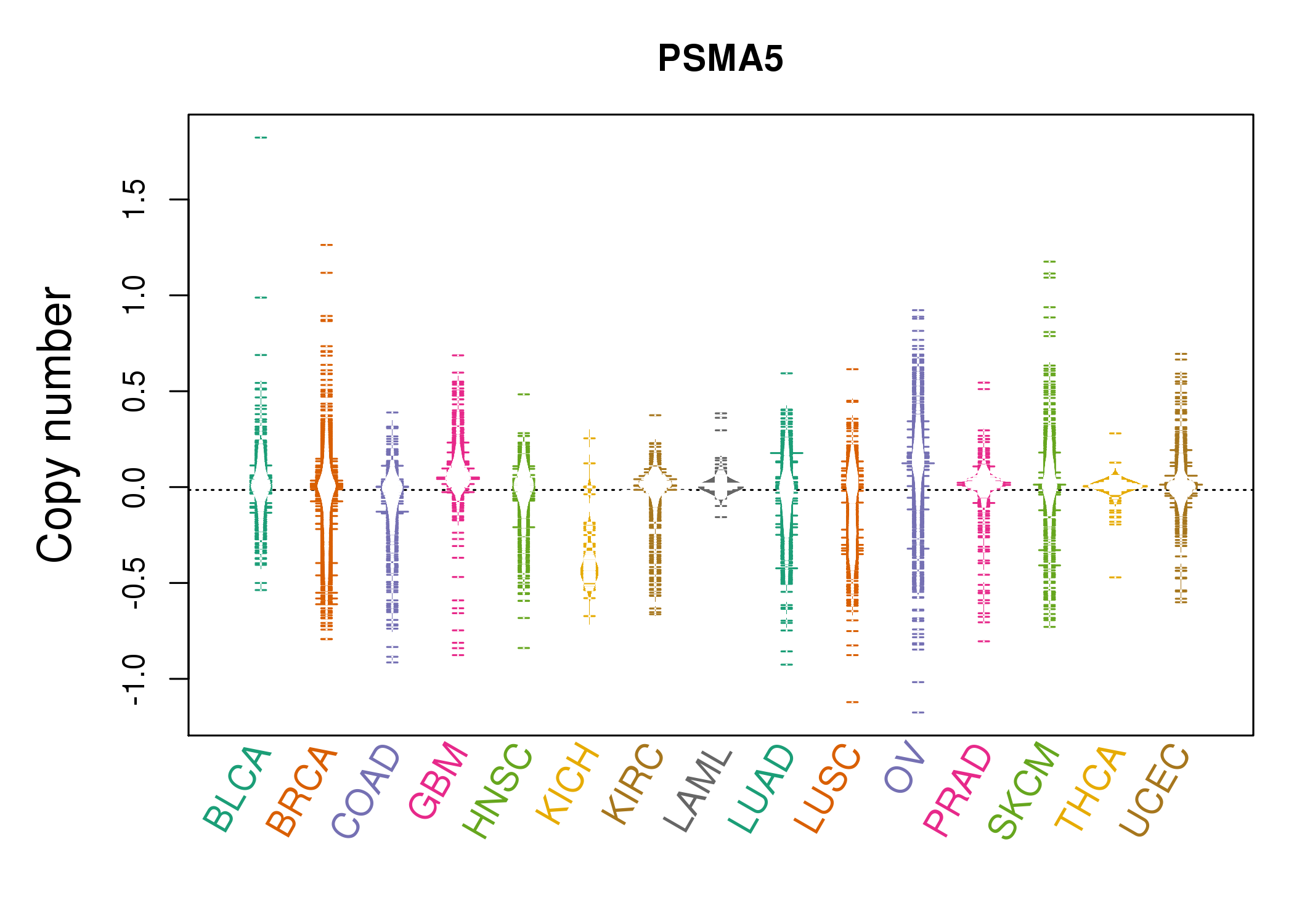 |
| cf) Tissue ID[Tissue type]: BLCA[Bladder Urothelial Carcinoma], BRCA[Breast invasive carcinoma], CESC[Cervical squamous cell carcinoma and endocervical adenocarcinoma], COAD[Colon adenocarcinoma], GBM[Glioblastoma multiforme], Glioma Low Grade, HNSC[Head and Neck squamous cell carcinoma], KICH[Kidney Chromophobe], KIRC[Kidney renal clear cell carcinoma], KIRP[Kidney renal papillary cell carcinoma], LAML[Acute Myeloid Leukemia], LUAD[Lung adenocarcinoma], LUSC[Lung squamous cell carcinoma], OV[Ovarian serous cystadenocarcinoma ], PAAD[Pancreatic adenocarcinoma], PRAD[Prostate adenocarcinoma], SKCM[Skin Cutaneous Melanoma], STAD[Stomach adenocarcinoma], THCA[Thyroid carcinoma], UCEC[Uterine Corpus Endometrial Carcinoma] |
| Top |
| Gene Expression for PSMA5 |
| * CCLE gene expression data were extracted from CCLE_Expression_Entrez_2012-10-18.res: Gene-centric RMA-normalized mRNA expression data. |
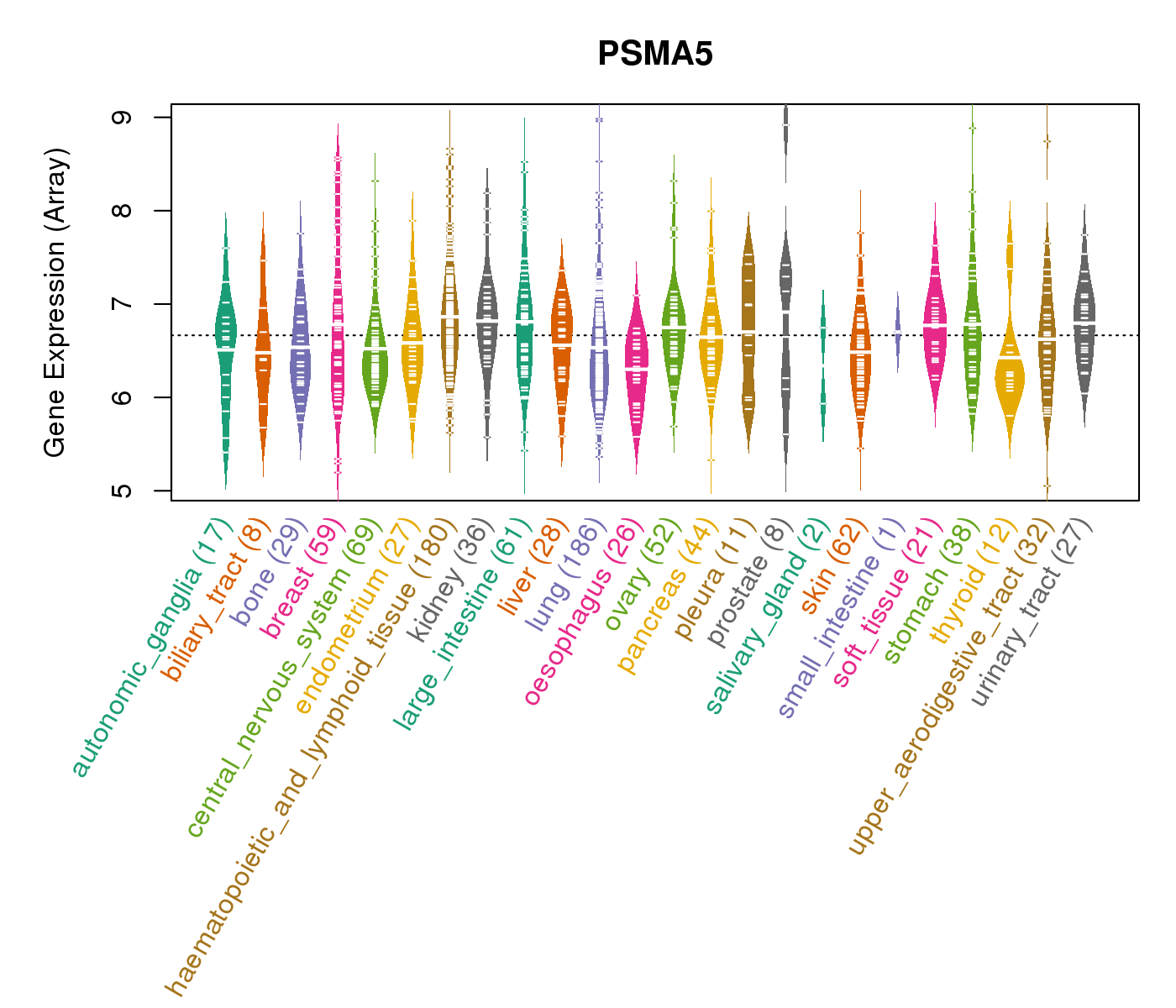 |
| * Normalized gene expression data of RNASeqV2 was extracted from TCGA using R package TCGA-Assembler. The URLs of all public data files on TCGA DCC data server were gathered at Jan-05-2015. Only eight cancer types have enough normal control samples for differential expression analysis. (t test, adjusted p<0.05 (using Benjamini-Hochberg FDR)) |
 |
| Top |
| * This plots show the correlation between CNV and gene expression. |
: Open all plots for all cancer types
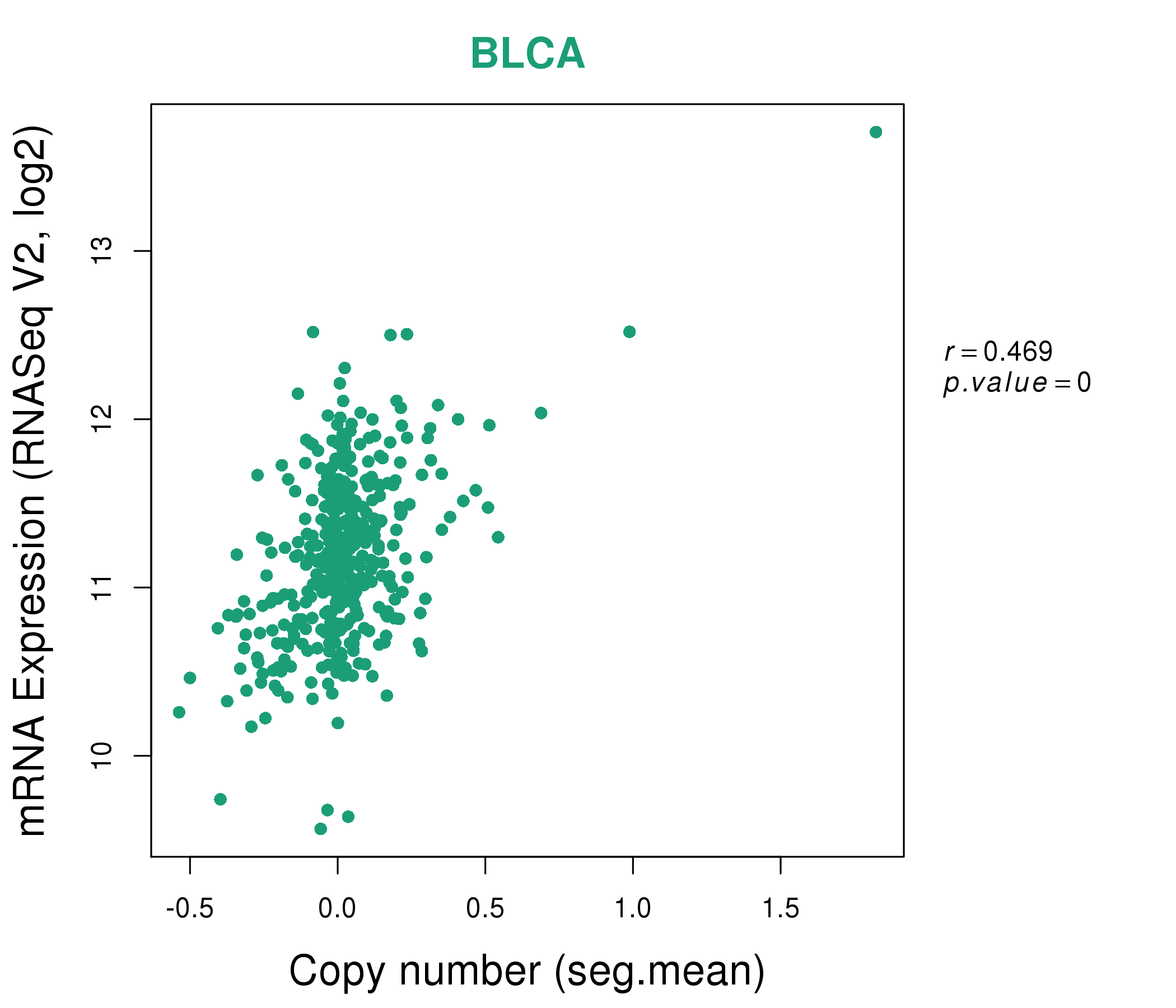 |
|
 |
|
| Top |
| Gene-Gene Network Information |
| * Co-Expression network figures were drawn using R package igraph. Only the top 20 genes with the highest correlations were shown. Red circle: input gene, orange circle: cell metabolism gene, sky circle: other gene |
: Open all plots for all cancer types
 |
| ||||
| ALG3,ATP5F1,BOLA3,C20orf24,LAMTOR5,MRPS15,PSMA2, PSMA4,PSMA5,PSMB2,PSMC1,PSMD14,PSME2,PSRC1, PTTG1,SARS,SNRPC,SNRPG,TALDO1,TUBA1C,WDR77 | CDC123,CHCHD1,CIAPIN1,DYNLT1,ERH,H2AFZ,HN1, JTB,MAD2L1BP,MRPL17,MRPS23,NUTF2,PSMA4,PSMA5, RBX1,SLC35B1,SNRPG,SSBP1,TMEM147,TXNDC17,UCHL3 | ||||
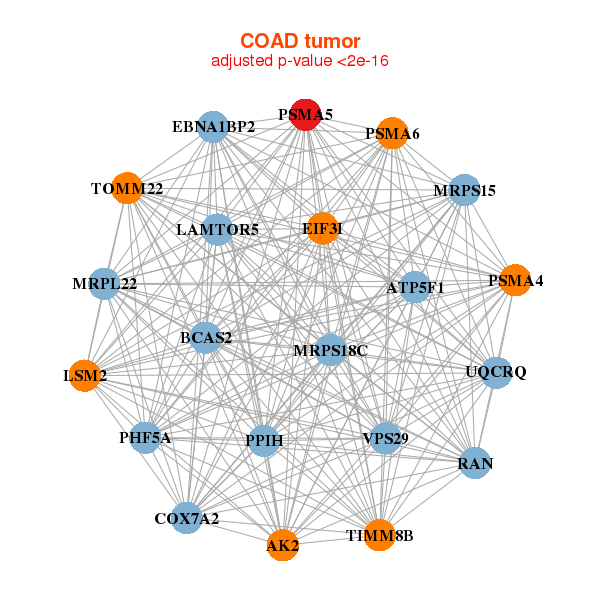 |
| ||||
| AK2,ATP5F1,BCAS2,COX7A2,EBNA1BP2,EIF3I,LAMTOR5, LSM2,MRPL22,MRPS15,MRPS18C,PHF5A,PPIH,PSMA4, PSMA5,PSMA6,RAN,TIMM8B,TOMM22,UQCRQ,VPS29 | EMC7,CKS1B,MRPL52,PGK1,POMP,PSMA1,PSMA2, PSMA3,PSMA4,PSMA5,PSMA6,PSMA7,PSMB1,PSMD13, PSMD14,RBX1,RPL26L1,SNRPG,STRA13,TMSB10,TOMM5 |
| * Co-Expression network figures were drawn using R package igraph. Only the top 20 genes with the highest correlations were shown. Red circle: input gene, orange circle: cell metabolism gene, sky circle: other gene |
: Open all plots for all cancer types
| Top |
: Open all interacting genes' information including KEGG pathway for all interacting genes from DAVID
| Top |
| Pharmacological Information for PSMA5 |
| DB Category | DB Name | DB's ID and Url link |
| * Gene Centered Interaction Network. |
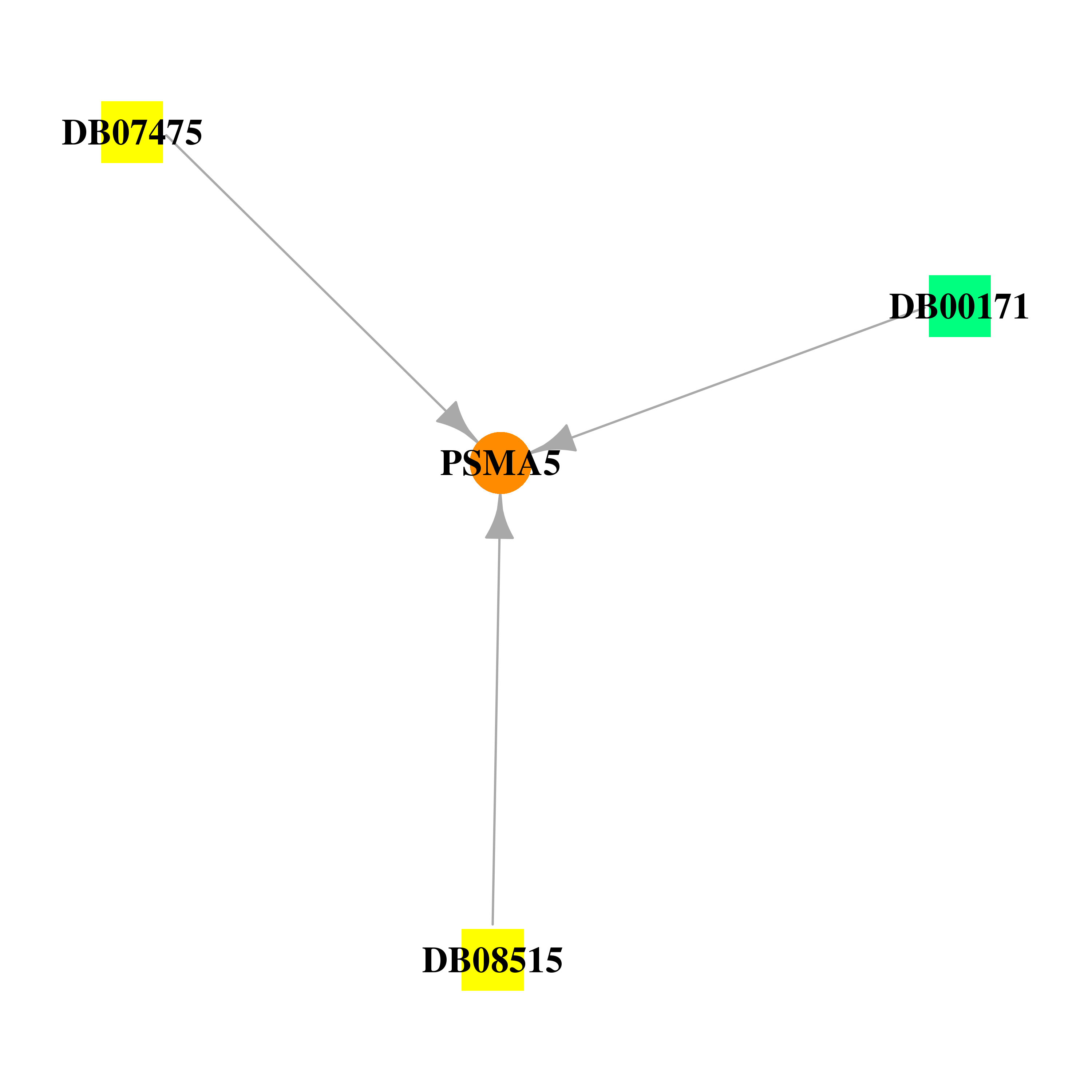 |
| * Drug Centered Interaction Network. |
| DrugBank ID | Target Name | Drug Groups | Generic Name | Drug Centered Network | Drug Structure |
| DB07475 | proteasome (prosome, macropain) subunit, alpha type, 5 | experimental | N-[(1R)-1-(DIHYDROXYBORYL)-3-METHYLBUTYL]-N-(PYRAZIN-2-YLCARBONYL)-L-PHENYLALANINAMIDE |  | 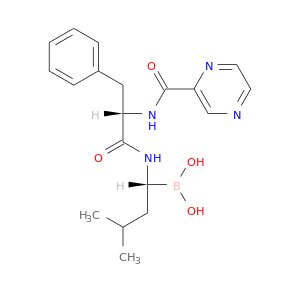 |
| DB08515 | proteasome (prosome, macropain) subunit, alpha type, 5 | experimental | (3AR,6R,6AS)-6-((S)-((S)-CYCLOHEX-2-ENYL)(HYDROXY)METHYL)-6A-METHYL-4-OXO-HEXAHYDRO-2H-FURO[3,2-C]PYRROLE-6-CARBALDEHYDE | 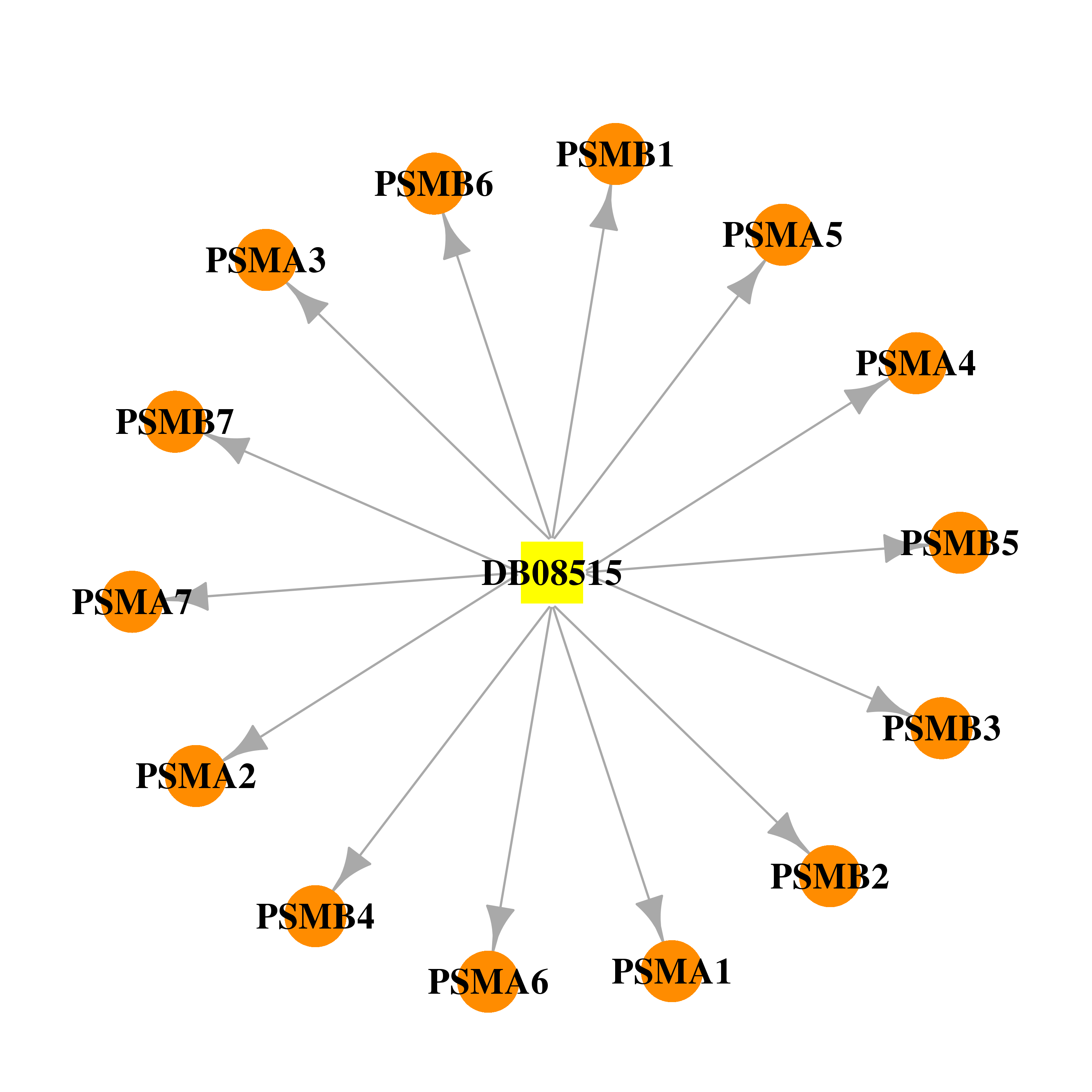 |  |
| DB00171 | proteasome (prosome, macropain) subunit, alpha type, 5 | approved; nutraceutical | Adenosine triphosphate |  |  |
| Top |
| Cross referenced IDs for PSMA5 |
| * We obtained these cross-references from Uniprot database. It covers 150 different DBs, 18 categories. http://www.uniprot.org/help/cross_references_section |
: Open all cross reference information
|
Copyright © 2016-Present - The Univsersity of Texas Health Science Center at Houston @ |






